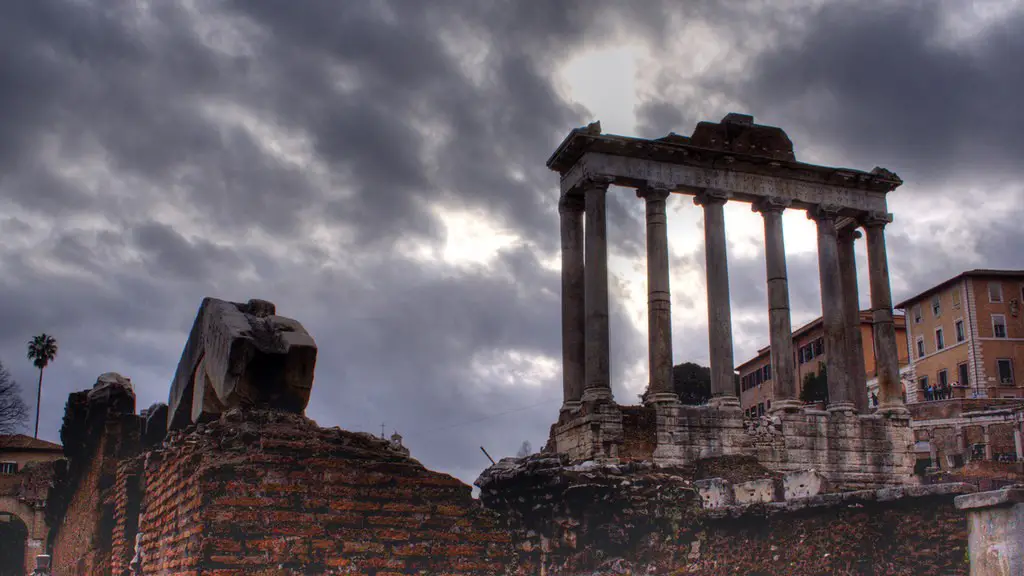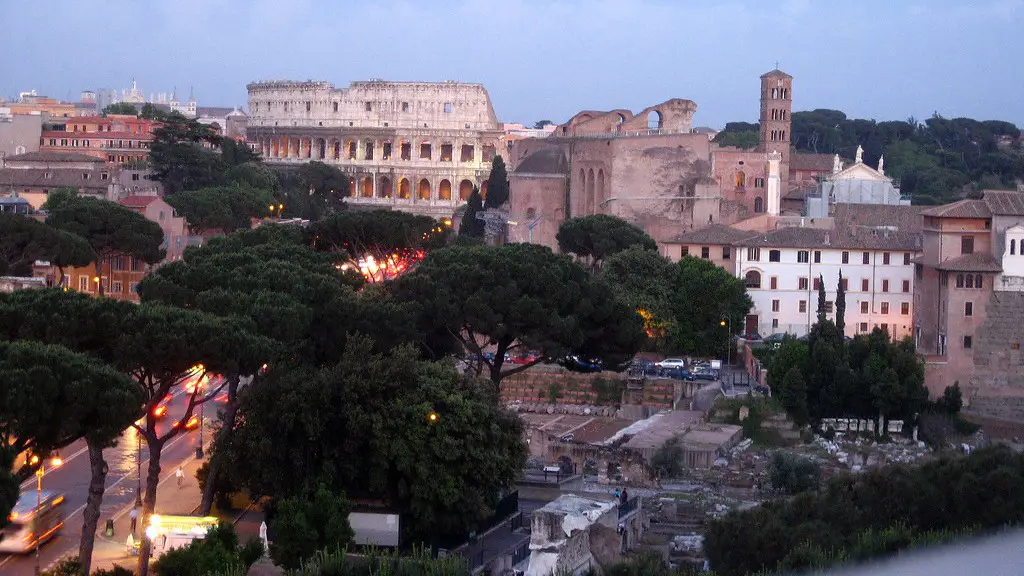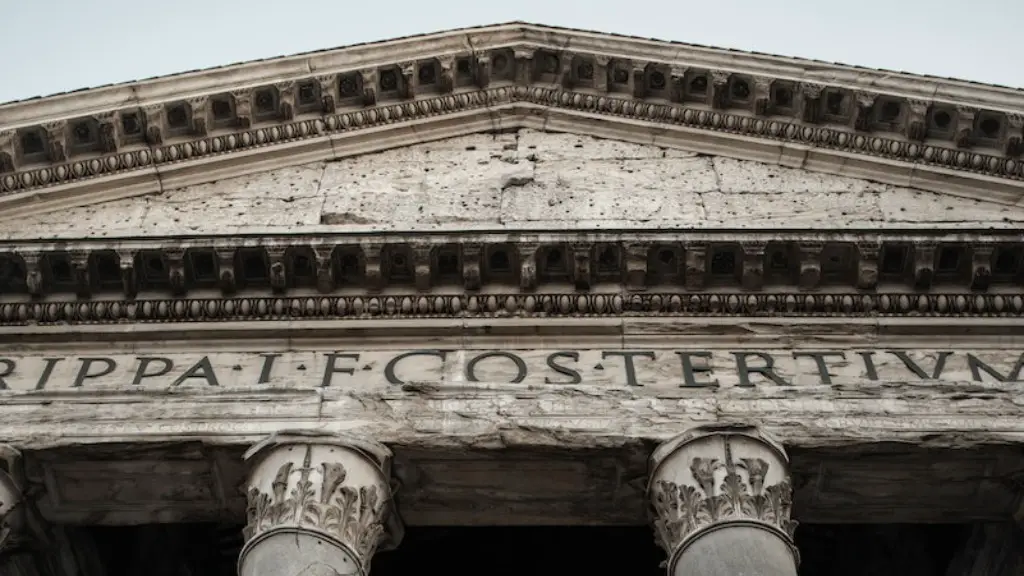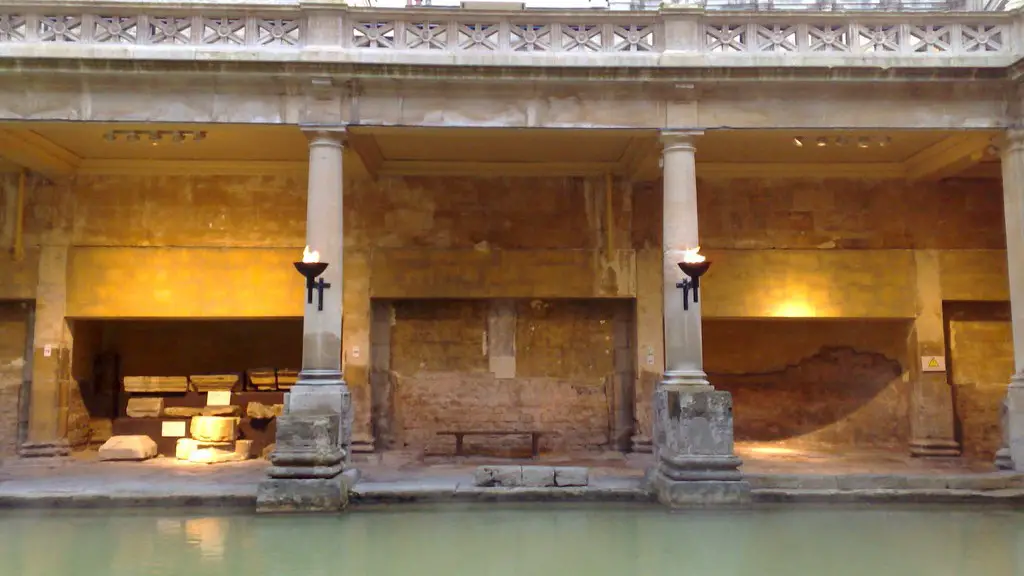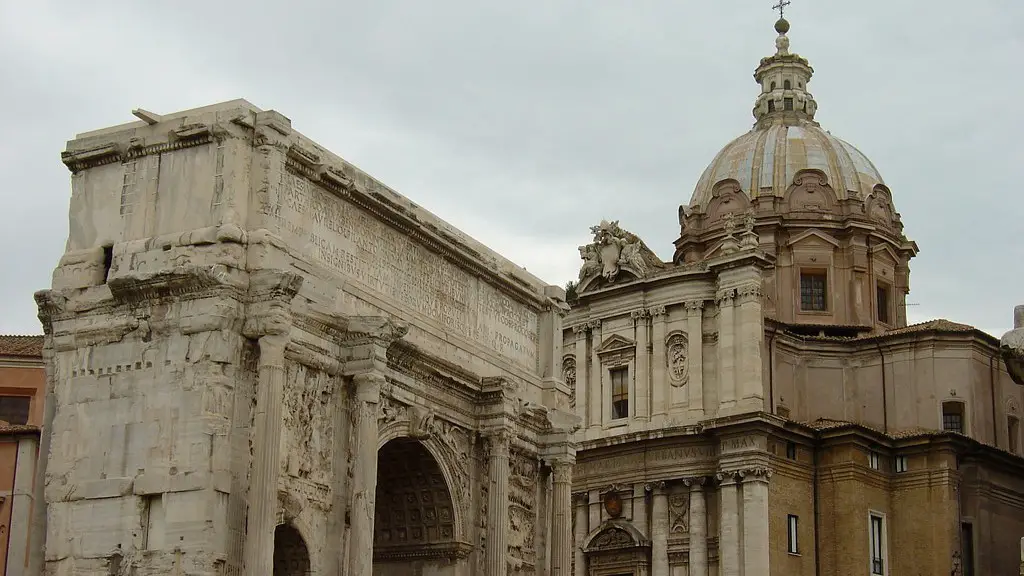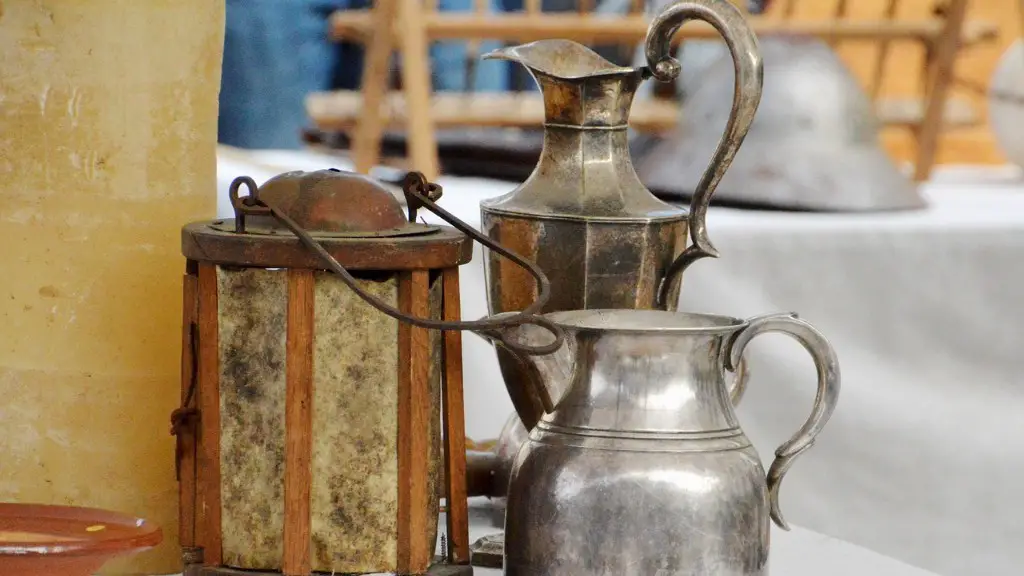Evolution of Roads in Ancient Rome
The construction of the first roads date back to long before 1600 BC. The ancient Romans had a fascination and respect for roads and how they could provide an essential service to an ever-expanding empire. Such an accomplishment was anything but instinctual since it required a technical and engineering skill that is unparalleled until modern times. As it turned out, the Roman’s excellent road building strategies and sophisticated engineering would eventually leave an indelible mark on the modern world.
Pavements, or “flat stones,” had already been developed by the Greeks and Etruscans – the latter of which had a very efficient system of roads and bridges. Famous for their distinguishing qualities, the Romans improved upon this innovation by using methods like the step-pattern – a common device used to even out uneven terrain – pushed in stones, and concrete. This was a departure from the traditional “war-like” engineering of the past, and the result was an unprecedented level of efficiency and precision – the Romans built the greatest roads ever made.
Another impressive feat of the Romans was the construction of a cohesive network of roads – both rural and urban. Not content with just building roads to transport troops, the Romans sought to expand transport options for passengers as well. This led to the development of the Appian Way, named for Appius Claudius, who served as a censor of Rome in 312 BC. Following the path of a pre-existing road, the Appian Way linked Rome and the port city of Brundisium and ultimately with the rest of the Mediterranean world.
It’s amazing to consider that many of the world’s most important cities were connected by the grandeur of the Roman road network. Even today, many of the existing roads trace their roots back to the Roman’s elaborate network. In addition, and perhaps more importantly, bridges were constructed as part of this system allowing different regions to be interconnected. This interconnectivity, while providing logistical benefit, also had a profound effect on a social level, as it helped to create a stronger sense of identity, unifying different provinces and encouraging a sharing of culture and knowledge.
It has been theorized that the reason Roman’s roads were so efficient is because of their use of the “metaling” method – placing alternating layers of dirt, small stones and cobblestones – as opposed to just laying down individual stones straight from a quarry. As the road was used and settled, it was natural for the layers of the road to become increasingly compressed, making for an incredibly smooth and level surface. The use of this method enabled the Romans to build roads with a greater degree of stability, durability and endurance. This was an incredibly forward thinking method for the time, and its influence can still be seen in the roads of today.
Romans also changed the way bridge construction was approached by using arches and concrete, as opposed to wood and stone. These were designed to last centuries, and they provided the stability which allows bridges to span distances of inconceivable lengths by today’s standards. Roman architects also possessed a keen understanding of the engineering behind bridge construction and applied ingenious methods of installation. An impressive example of this is Ponte d’Augusto, a bridge over the Tiber River near Narni, Italy which was constructed with a staggering 5 arches.
The Romans’ enthusiasm and skill for engineering certainly has left an impression that’s still seen today. Therefore it’s not surprising that their markings in the field of road construction have endured the test of time. The Romans’ legendary road network supported a civilization that was eventually responsible for spreading civilization throughout its boundaries, something many other civilizations before them were unable to accomplish.
Major Accomplishments
Today, the Romans are best remembered for the countless contributions they have made in the arenas of architecture and engineering. Of particular note are the numerous breathtaking accomplishments they achieved in road building.
In the first century BC, Roman engineers perfected the process of laying and splattering concrete, which would become the standard for road engineering for centuries to come. This method allowed for smoother and more uniform road surfaces than before, and it also allowed for more efficient transport on less time. Roman roads were often perfectly straight, with gentle turns at which to change direction, and these qualities enabled even faster travel.
Roman road engineers also worked hard to ensure that the roads were as waterproof as possible, as roads that are flooded or full of mud and snow can severely limit the scalability of travel times. This was achieved by constructing hundreds of underground drains that carried away water and mud on the roads surface, allowing it to remain useable even in the worst of weather conditions.
It’s not only the implementation of technology that made the roads of Rome great. The Romans were masters of construction process, so much so that they could build roads in a fraction of the time it took other people, who would gather large groups of people and spend months working on a single stretch of road. The Romans were said to have accomplished this feat of speed by dividing long roads into small sections, which were then each worked on by specialized teams.
In addition to the sheer speed at which the Romans were able to construct roads, the finesse and intricacy with which these roads were built was unrivalled. The roads featured in the Roman civilization were marvels of engineering and architecture, and the quality of these roads was such that some are still in use today, centuries after they were created.
Durability and Versatility
One of the greatest legacies of the Roman roads is the durability of their engineering. Built using concrete and stone, many roads constructed by the Romans still stand to this day and are even used by modern roads and cities. This is a testament to the foresight of the Romans in terms of the engineering capabilities and the thought put into the design and construction of their roads.
In addition, the versatility of the roads was something that had to be admired. Roads crafted by the Romans could be used for both leisurely walks, as well as for transporting goods and people. Furthermore, these roads typically had a greater amount of wiggle room for those who wanted to avoid whatever lay on the road in between, making them incredibly valuable for getting from one place to another quickly and effectively.
At the same time, the design of the Roman Empire and the roads that connected it require a tremendous amount of dedication and thought. The intricate network of roads built by the Romans linked together numerous locations, cities and provinces, making it so much easier to travel and transport goods between countries. This intricate network of roads has been proven to be crucial to the success of the Roman Empire, and one can only admire the foresight and skill of their engineers.
Conclusion
The ancient Romans were masterful engineers and could create roads of remarkable durability and efficiency. The roads created by the Romans were well-built and solid, lasting centuries, and are even still in use today. The quality of the roads, when compared to those created by other civilizations of the time, was unmatched and enabled the Romans to have a superior transportation system, allowing for goods and people to travel quickly and effectively throughout the Roman Empire.
The Romans’ use of engineering and technology to build roads with concrete and stone was groundbreaking and powerful and put their roads ahead of those of other civilizations. The commitment, dedication, and ingenuity of the Romans is something that has been unmatched since, and their legacy continues to inspire and amaze us to this day.
Innovations in Road Building
The Roman’s remarkable road network was the result of a number of clever innovations that set it apart from the roads of other civilizations. One of the most notable was their use of the “metaling” technique. This approach saw alternating layers of dirt, small stones and cobblestones being used to create a solid and resilient layer of ground, rather than just placing individual stones in a quarry.
This had the effect of stabilizing the road quickly and with less effort, and it also increased the road’s endurance and longevity. This was an incredibly advanced technique for its time, and one that is still seen in the construction of roads today.
The Romans also excelled in bridge construction. Here, their use of the arch and concrete allowed for more resilient bridges to be built than ever before. The support that this system provided allowed bridges to be built that could span distances much larger than those possible with other types of architectures. This increased the speed and ease of transport, and assisted with the connectivity of the Roman Empire.
The combination of this technology with the engineering skills of the Romans was responsible for the creation of structures and roads that have withstood the test of time and is still referred to this day as a model of excellence. They were also responsible for creating an intricate system of roads, bridges and aqueducts, which enabled the transportation of goods and people to be vastly improved.
Modern Day Implications of Roman Roads
The Romans’ fascination with roads has left an indelible mark on the modern world. Many of the roads seen today are modeled off of the design of the Roman’s intricate and powerful road network known as the Appian Way. Furthermore, the technology used by the Romans has also been adopted into the contemporary world, such as the use of step-patterns to even out uneven terrain.
What’s remarkable about the Roman’s roads is that some of them are still standing and in use today. An example of this is the Fidentian Way, a road which branches off from the Appian Way and connects the Italian cities of Piacenza and Pistoria. The Fidentian Way is still in use today, having been constructed in 148 AD, although much of it has been altered or replaced in parts.
The legacy of the Romans’ engineering continues to be felt in modern times. For example, some of the techniques used by the Romans in road and bridge construction have been modernized and applied by current engineers. In addition, many of the engineering and architectural techniques used by the Romans have been studied and adapted for modern times, demonstrating the spirit of innovation and resilience of the Roman people.
Socio-economic Benefits of Roman Roads
Not only did the Roman roads serve as an efficient means of transportation, they also helped to create a stronger sense of identity, unifying different provinces and encouraging a sharing of culture and knowledge.
The roads allowed easier access to cities, enabling travelers to quickly get from one point to another while also providing people with a sense of security. The ability to easily move around allowed villages and cities to be developed more quickly and these areas were able to create and develop their own culture and traditions as a result.
The Roman roads also allowed for collaboration between different areas due to the free flow of goods and people. The roads enabled transport and trade to become a more regular occurrence, with items from one location being able to be traded and exchanged with those in other regions. This increased level of communication and trade resulted in greater socio-economic benefits for the people who lived in the cities connected by the Roman roads.
The Roman’s road network had no doubt impacted its society in a variety of ways and has left an indelible mark on the world. Even today, the roads that the Romans built are still serving the same purpose and are a clear reminder of the sophisticated engineering and architecture that they displayed throughout their empire’s remarkable history.
